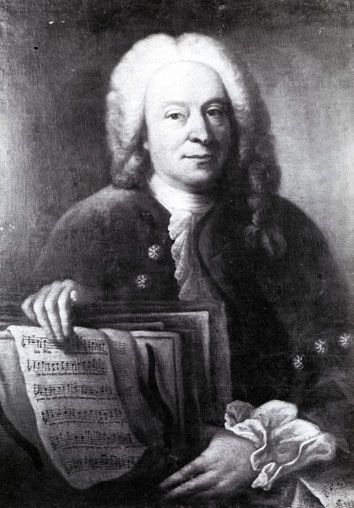Bach, Johann Christoph, 1642-1703. Ich lasse dich nicht
Enlarge text Shrink textIch lasse dich nicht, du segnest mich denn (I will not let you go unless you bless me), BWV 1164 (renumbered from BWV Anh. 159), is a motet for SATB double choir which was attributed to Johann Sebastian Bach when it was first published in 1802. Around 1823 the motet was published as a composition by Johann Christoph Bach, Johann Sebastian's father's cousin, after which its attribution became a matter of discussion among scholars. The motet consists of two movements: the oldest extant manuscript of its first movement was partly written by Johann Sebastian, in 1712, or early 1713 at the latest. Its second movement is without doubt a chorale harmonisation by Johann Sebastian composed before c. 1735, when a version of this setting was copied in the Dietel manuscript, but it is uncertain when, and by whom, it was added to the first movement. Notwithstanding an 18th-century catalogue entry apparently describing the motet as a work for four voices with basso continuo, it is transmitted as an a cappella composition for eight voices without any form of instrumental accompaniment. The text of its first movement consists of a dictum, Genesis 32:27 (which is Genesis 32:26 in most English Bibles), and the third stanza of the Lutheran hymn "Warum betrübst du dich, mein Herz". Such a mixture of scripture and chorale texts was common for motets of the generation before Johann Sebastian, as also its eight-part setting. The hymn tune of the chorale, Zahn No. 1689a, appears as a cantus firmus sung by the soprano. Over-all the complexity and style of this movement's setting appears closer to similar works by a young Johann Sebastian than to somewhat less comparable works by a mature Johann Christoph. The closing chorale, a four-part setting of the "Warum betrübst du dich, mein Herz" hymn tune, has the two last stanzas of that hymn as text. Leipzig performances of Bach's motets usually closed on the last stanzas of a hymn, so it can not be excluded that the chorale was added to the motet by Bach, some time after his appointment as Thomaskantor in that city in 1723. The lingering attribution issue complicated the motet's reception history. In Leipzig, the motet was performed as Johann Sebastian's from the 18th to well into the 19th century. In the second half of the 18th century, Johann Sebastian's son Carl Philipp Emanuel, apparently not assigning the composition to any specific member of the Bach family, joined the early manuscript of its first movement to the Altbachisches Archiv (old-Bachian archive, ABA), a collection of mostly 17th-century compositions by his ancestors. Both the 19th-century Bach-Gesellschaft Ausgabe (BGA) and the 1954–2007 New Bach Edition (NBE) published the motet, while expressing reserves about its authenticity. Containing several motets by Johann Christoph, Max Schneider's 1935 edition of the ABA pieces did not include Ich lasse dich nicht. Complete recordings of Johann Sebastian's motets are issued with or without BWV Anh. 159.
Read more on Wikipedia >
 Title
Title


